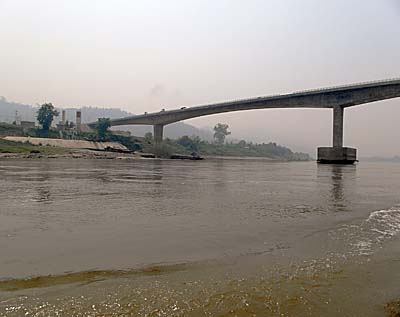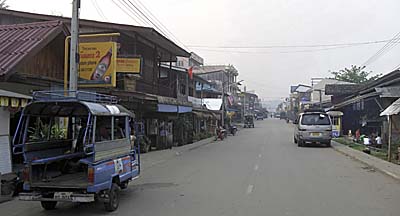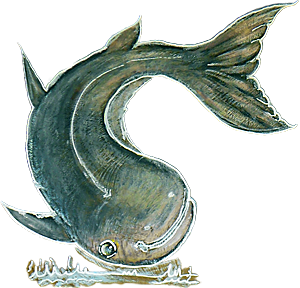1.
Houayxay
As a formerly remote borderpost in Laos' north at the left banks of the mighty Mekong River, the little town of Houayxay (also: Huay Xay, Houey Sai, Houaixai, Huaixai) is pretty much booming in the last years. Particularly the construction and opening of the new Mekong bridge (4th Thai/Laotian Friendship Bridge, opened in December 2013), gives strong impulses for economic growth and another building boom in the green, hilly province of Bokeo.
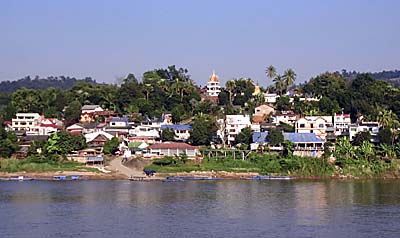
Houayxay, seen over the Mekong River from Chiang Khong. The road which leads down to the water marks the old pier; right of it the old customs office and behind, the tower on the top of the hill, is Wat Jom Kao Manilat, built in Shan style. Image by Asienreisender, 2010
Together with the new bridge, the ancient road nr. 3 (Asian Highway 3 - AH3) between Houayxay and Boten has been much improved. It's a long-distance connection between Kunming in south China and Thailand, where the improved road now links Chiang Khong via Toeng with Chiang Rai - Chiang Mai and eventually Bangkok. Chiang Khong is a Thai town opposite Houayxay at the western banks of the Mekong River. Until 2013 the border crossing between the both towns happend via a frequent longtail boat service for people. One arrived at the pier and within a few minutes the next boat would go. For vehicles there was a big ferry which could carry also big trucks.
Houayxay is also the northernmost border crossing for international tourists between Laos and Thailand. There is no possibility to cross the border at Chiang Saen, except for Thai/Laotian nationals only.
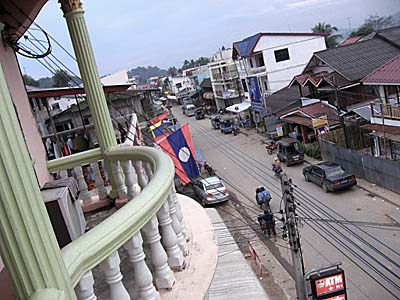
A glance on Houayxay's main road (the parallel road to the river). Here are a couple of guesthouses and restaurants. Honestly, food and accommodation are better in Chiang Khong, and the Thai People there are also more welcoming than the people here in Laos. Image by Asienreisender, 2010
Houayxai has a small domestic airport five kilometers out of town. It connects the place with Luang Prabang and Vientiane. Traditionally the Mekong River and it's picturesque wooden boats are the common vehicles for travelling. A popular river boat trip is between Houayxay and Luang Prabang with a stopover in Ban Pak Beng for a night. For a lively impression of that trip you can watch the video 'On the Mekong'.
Driving the river upwards to Xieng Kok is possible but much more difficult. There is no regular ferry service, one has to travel on a transporter, maybe together with cows and water buffaloes. The departure pier would also not be in Houayxay directly, but some fourty or so kilometers riverupwards opposite Chiang Saen or at the Golden Triangle.
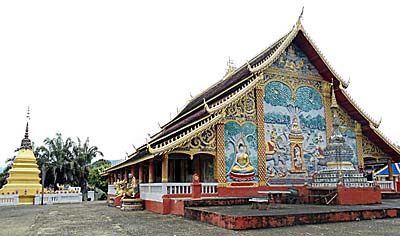
19th century Wat Jom Kao Manilat. Image by Asienreisender, 2011
Houayxay's topography is mountainous. On one of the hills close to the Mekong River is the old French fortress Carnot placed. The greatest parts of what is nowadays Laos was in former times part of the empire of Siam. Due to a very aggressive 'canon boat' politics of the French colonial empire in Indochina these remote and poor landscapes were given over to France in 1893. In 2011 Fort Carnet, a completely run-down ruin, was under restoration.
Another historical building is Wat Jom Kao Manilat, which was built in 1880 in teak wood and in Shan architectural style. The temple is prominently placed on top of a hill, overseeing the Mekong River. Until 2013, when one arrived at Houayxay's pier, it was a few meters walk the road up to the main road parallel to the river. On the other side a long stairway began (and still does), which leads up to the Wat.
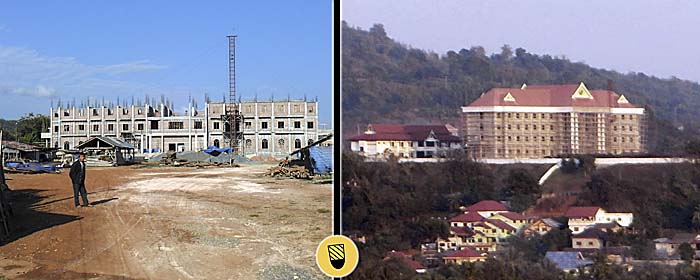
A palazzo prozzo for the ruling communist functionaries: the governor's new palace in Houayxay. The image left shows the state of the affair in 12/2011, the image right in 1/2013. Meanwhile it's certainly complete. Images and photocomposition (2014) by Asienreisender

